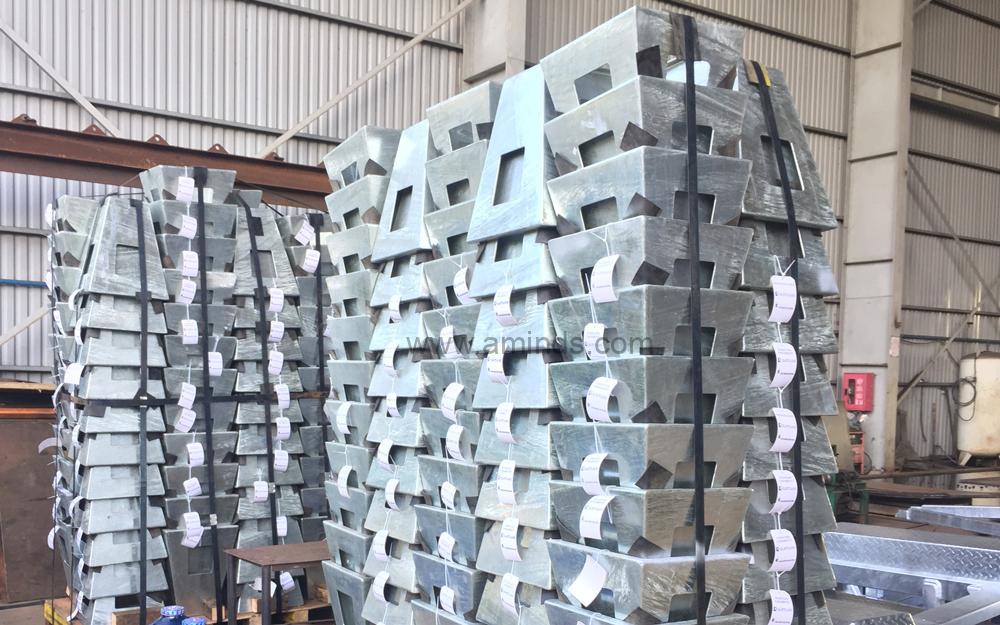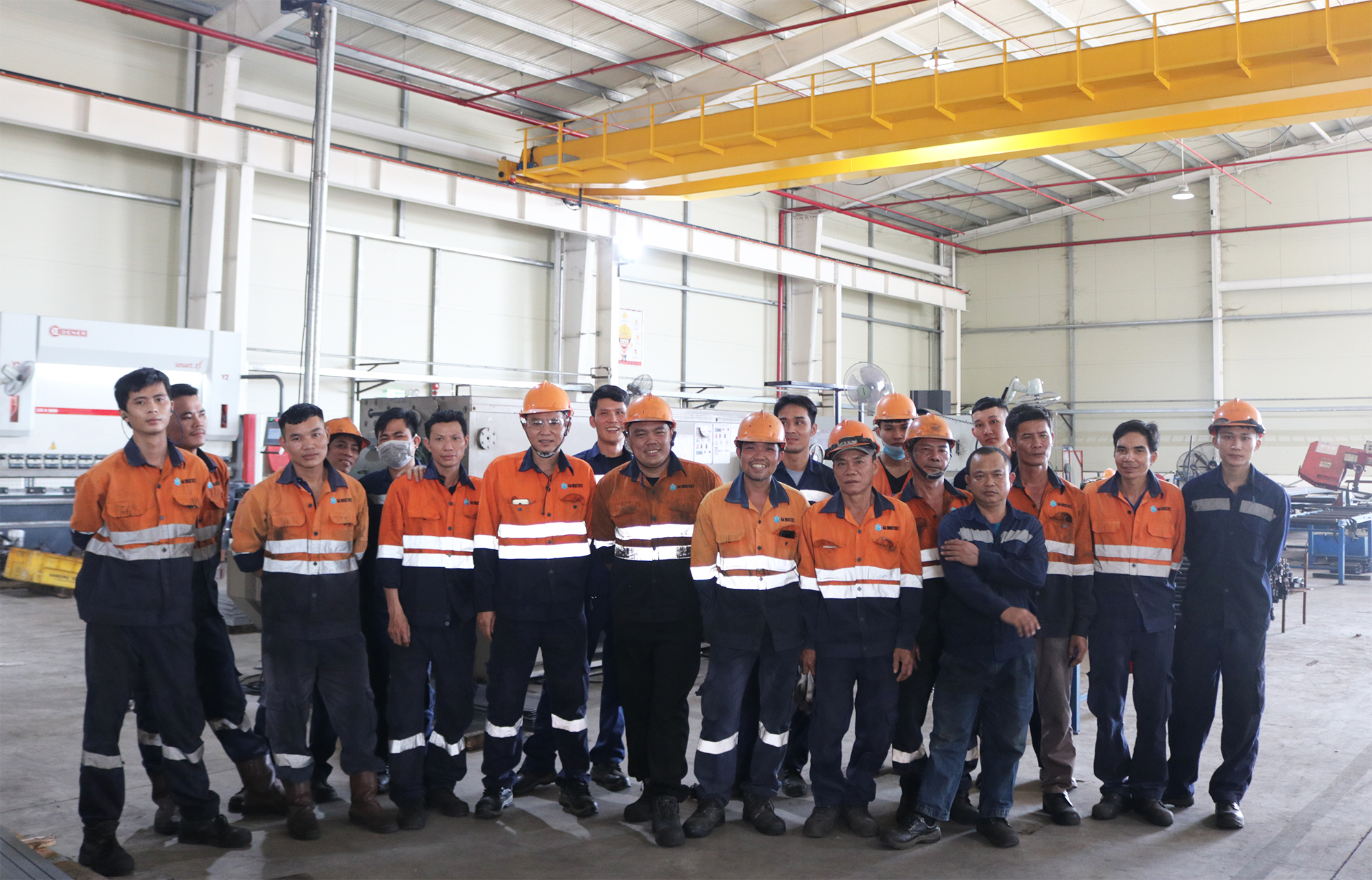6 Types of steel coating
- Zinc coated steel (galvanized)
- Aluminium-zinc alloy coated steel
- Organic coated: PVC plastisol
- Organic coated: Polyvinylidene difluoride (PVDF aka PVF2)
- Organic coated: Polyester
- Organic coating: Enamel

TYPE OF STEEL COATING
3 Types of Steel
1. Carbon Steels
Carbon steels contain trace amounts of alloying elements and account for 90% of total steel production. Carbon steels can be further categorized into three groups depending on their carbon content:
- Low Carbon Steels/Mild Steels contain up to 0.3% carbon
- Medium Carbon Steels contain 0.3 – 0.6% carbon
- High Carbon Steels contain more than 0.6% carbon

2. Alloy Steels
Alloy steels contain alloying elements (e.g. manganese, silicon, nickel, titanium, copper, chromium and aluminum) in varying proportions in order to manipulate the steel’s properties, such as its hardenability, corrosion resistance, strength and ductility along with its abilities to be formed and welded
Stainless steels generally contain between 10-20% chromium as the main alloying element and are valued for high corrosion resistance. Stainless steels can be divided into three groups based on their crystalline structure:
- Austenitic: Austenitic steels generally contain 18% chromium, 8% nickel and less than 0.8% carbon. They form the largest portion of the global stainless steel market. A typical use of austenitic steel is in masonry support systems.
- Ferritic: Ferritic steels are weaker and less ductile than austenitic steels. They contain trace amounts of nickel, 12-17% chromium, less than 0.1% carbon. They are prone to ‘pitting’ so if appearance is important, their use tends to be limited to internal applications such as shop fitting.
- Martensitic: Martensitic steels are strong but brittle and harder to weld and shape. They contain 11-17% chromium, less than 0.4% nickel and up to 1.2% carbon. Though cheaper than austenitic steels, their low resistance to corrosion limits the range of suitable applications.
- Duplex Steels Are a mixture of authentic and ferritic which makes them suitable for applications where corrosion resistance and strength are equally important.
6 Energy
- Total world crude steel production 2013: 1,606 Mt
- Average energy in the production of primary steel: 18.68 GJ/t
- Average CO2 intensity: 1.77 t CO2/t
Of which:
- Basic Oxygen Steelmaking (BOS): 70% of total production energy
- Electric Arc Furnace (EAF): 30% of total production energy electric Arc Furnace in operation
Energy sources in producing primary steel:
- 50% coking coal
- 35% electricity
- 5% natural gas
- 5% other gasses
7 Recycling & Reuse
Recycling
- 42% of crude steel produced is recycled material
- The re-melting proportion of steel scrap is constrained by availability. Availability can sometimes be defined as cost-effective recovery.
Iron and steel are the world’s most recycled materials, and among the easiest materials to reprocess, as they can be separated magnetically from the waste stream. Recycling is via steelworks: scrap is either re-melted in an electric arc furnace (90-100% scrap), or used as part of the charge in a Basic Oxygen Furnace (around 25% scrap). Any grade of steel can be recycled to top quality new metal, with no ‘downgrading’ from prime to lower quality materials as steel is recycled repeatedly.
Recovery and reuse in construction
Globally around 85% of construction steel is currently recovered from demolition (source WSA) (UK 96% source steelconstruction.info)
Re-use of structural steel
Steel reuse is any process where end-of-life steel is not re-melted but rather enters a new product use phase.
Steel buildings and products are intrinsically demountable. Easily re-usable components include:
- Piles (sheet and bearing piles)
- Structural members including hollow sections
- Light gauge products such as purlins and rails.
Design for reuse
To facilitate greater reuse it is important that designers not only use steel but also do what they can to optimize future reuse. Steps that the designer can take to maximize the opportunity for reusing structural steel include:
- Endplate beam to column and beam to beam connections
- Use bolted connections in preference to welded joints to allow the structure to be dismantled during deconstruction
- Use standard connection details including bolt sizes and the spacing of holes
- Ensure easy and permanent access to connections
- Where feasible, try to ensure that the steel is free from coatings or coverings that will prevent the visual assessment of the condition of the steel.
- Minimize the use of fixings to structural steel elements that require welding, drilling holes, or fixing with Hilti nails; use clamped fittings where possible
- Identify the origin and properties of the component for example by bar-coding or e-tagging or stamping and keep an inventory of products
- Use long-span beams as they are more likely to allow flexibility of use and to be reusable by cutting the beam to a new length.
(source: SteelConstruction.info)
OUR FABRICATION PROCESS

If you want reliable steel parts, contact the experts at AM Industries Vietnam. Our processes include stamping, welding, folding, bending, and finishing to match our exact requirements.
Working as a solution provider, at AM Industries Vietnam, we are completely focused on our approach and it is reflected in our business process. Due to our committed approach, we are highly trusted by our clients.
It has further helped us to achieve a respectful position among our competitors. AM’s a dynamic company and it is conquering big markets through its two primary strategies: Total quality & Flexibility.
We believe in an industrial world made of trust, passionate and dedicated people. We word to achieve this with an open-minded, quick and customer-centered approach.
Want to learn more about our steel fabrication services in Vietnam? Contact us today for a quote based on your requirements. If you need help, our experienced engineers are available to help determine the requirements for your specific project.
Please feel free to get in touch with us for all your inquiries.


